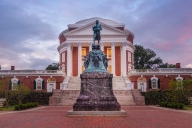You have /5 articles left.
Sign up for a free account or log in.
Anyone can get a car loan, right? And people don’t get those off the backs of taxpayers. That’s what private lenders are for. What’s so different about student loans? Private lenders will fill the gap, just like they do for people who can’t buy cars with cash, and everybody’s happy.
Perhaps at first blush that argument appears to make sense, but it leans on a false equivalency that places the future of real people at risk and creates the potential that society will ultimately become less than it could be.
Exhibit A is a provision to reduce the annual federal student loan borrowing cap to $28,500 for most graduate and professional students that is included in HR 4508, known as the PROSPER Act, which passed the education committee of the U.S. House of Representatives in December.
Presumably, since such a limit will not cover the cost of education for many graduate and professional programs, the committee expects that private lenders will fill the void. That supposition, however, is betrayed by a fatal flaw: collateral.
Privately financed student loans do not -- and cannot -- work in the way consumer loans do.
Obviously, an education cannot be repossessed, but that’s far from the whole story. The linchpin underlying lending decisions is an assessment of an applicant’s willingness and ability to repay the obligation. A credit score, which typically acts as the fundamental tool to identify a generic willingness to pay, is of less predictive value given the limited credit history for many student borrowers.
Assessing ability to pay is even more challenging -- after all, student loans for professional school are typically taken out by people who, by definition, have little or no income and expect no income improvement for multiple years.
Further complicating the picture is the fact that, unlike with other consumer loans, loans to students typically do not require payments until a borrower leaves graduate school, often well into the future. During this period, tens of thousands of additional student loan debt and other financial or family obligations may accumulate, materially changing an applicant’s financial profile. Moreover, even graduation is no guarantee that a person will earn sufficient income to repay the debt, due to a shifting job market, failure to get a necessary license or otherwise.
Such conditions are less than ideal for a bottom line-driven private lender, and in many cases, lending to certain persons might be seen as unsound from a commercial point of view. No private entity will, at least not for long, knowingly operate in a way that generates ongoing losses, no matter how noble the cause.
A primary purpose of government is to ensure that important policy goals -- and societal values -- are not frustrated by the failure of private markets. In fact, the impetus for the creation and the maintenance of the Higher Education Act reflects the value for society in ensuring that access to higher education not be limited to those with wealth and the ability to access private credit.
The annual federal lending cap contained in the PROSPER Act will, literally and figuratively, change the complexion of graduate and professional education. Its impact will be felt most severely among those historically underrepresented students in postbaccalaureate programs: racial minorities and those from economically disadvantaged backgrounds. In an era when advanced degrees are of increasing importance, limiting access will stall -- or even reverse -- decades of progress and return us to an era when the zip code of your high school effectively determined your ability to pursue an advanced degree.
Fortunately, there are various ways to maintain expanded access while allowing the private market to pick up some of the slack. For example, the federal government could act as a lender of last resort for students from economically disadvantaged backgrounds, ensuring that only people negatively impacted by the private market failure would be served.
The stakes are high. And the answers are not simple. But policy makers must understand and appreciate the implications of a federal student loan cap and act judiciously to maintain the promise of the Higher Education Act for all.




